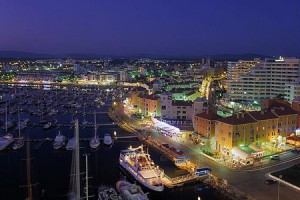Driving Advice Portugal
 Going to Portugal this summer? Here are som good advices for driving in Portugal, that will keep you prepared and safe on your journey. General driving advice and special equipment for driving legaly in Portugal. Use this as a checklist before you go to avoid any problems.
Going to Portugal this summer? Here are som good advices for driving in Portugal, that will keep you prepared and safe on your journey. General driving advice and special equipment for driving legaly in Portugal. Use this as a checklist before you go to avoid any problems.
General driving advice Portugal:
– A valid full driving licence. The original vehicle registration document and Your passport
– Make sure you have European breakdown cover.
– 112 is the emergency number across Europe.
– Don’t use a hand held mobile while driving.
– If you wear glasses, take a spare pair.
– It is recommended that you have a reflective jacket in the car – they are compulsory in many European countries.
– Speed camera / radar detection systems are illegal in most European countries. Come countries have also banned the use of sat navs which detect fixed speed cameras so ensure this is deactivated.
– Plan your journey
– There is only one safe rule when it comes to drinking and driving; if you drink, don’t drive.
Check your Car before taking of to Portugal:
Service your car before you go to avoid expensive and frustrating breakdowns while away. Check the tread for wear – the legal limit in the summer for car tyres across Europe is 1.6mm but we recommend a minimum of 3mm as tyres wear quickly after 3mm. Check the tyre pressure – remember to check them when cold. Check tyres for any damage and replace them if you need to. Think about taking a puncture repair kit to get you on the road again without having to change a tyre, until you are able to get to a garage for a replacement.
Driving Advice Portugal
– Warning triangle
– Temporary Electronic Toll Device to drive in certain motorways which can be obtained from popular motorway stations including CTT and Via Verde. You need to pre-load the device with a minimum of €10 and a €27 deposit will also be required. When the toll device is returned, deposits and unused credit will be returned.
– Car insurance with third-party cover is compulsory.
– When approaching a roundabout give way to traffic already on the roundabout, on your left, unless signed otherwise.
– Carrying or using radar detectors is not allowed, severe penalties apply.
– Loading bicycles on the back of a car is not allowed.
The use of the horn in urban areas is prohibited during the night, unless it’s an emergency.
– Speed limits for private vehicles without trailers (may vary, always look out for signs): In built-up areas 31 mph (50 km/h)Outside built-up areas 55 mph (90 km/h)Motorways 74 mph (120 km/h)Minimum speed limit on motorways and dual carriageways 31 mph (50km/h)
– Drivers owning a licence for a year or less are not allowed to exceed a speed limit of 55mph (90 km/h.) For roads where the speed limit is lower than 55mph (90 km/h), these should be met.
– Seat belts: Seat belts are compulsory for front/rear seat occupants (if fitted) Children who are 12 years old or below (and/or measuring less than 4ft11in) cannot travel as front seat passengers. They must travel in the rear using a special restraint system adapted to their size and weight. Children under 3 can be seated in the front passenger seat using a suitable child restraint but only when the airbag has been switched off.

